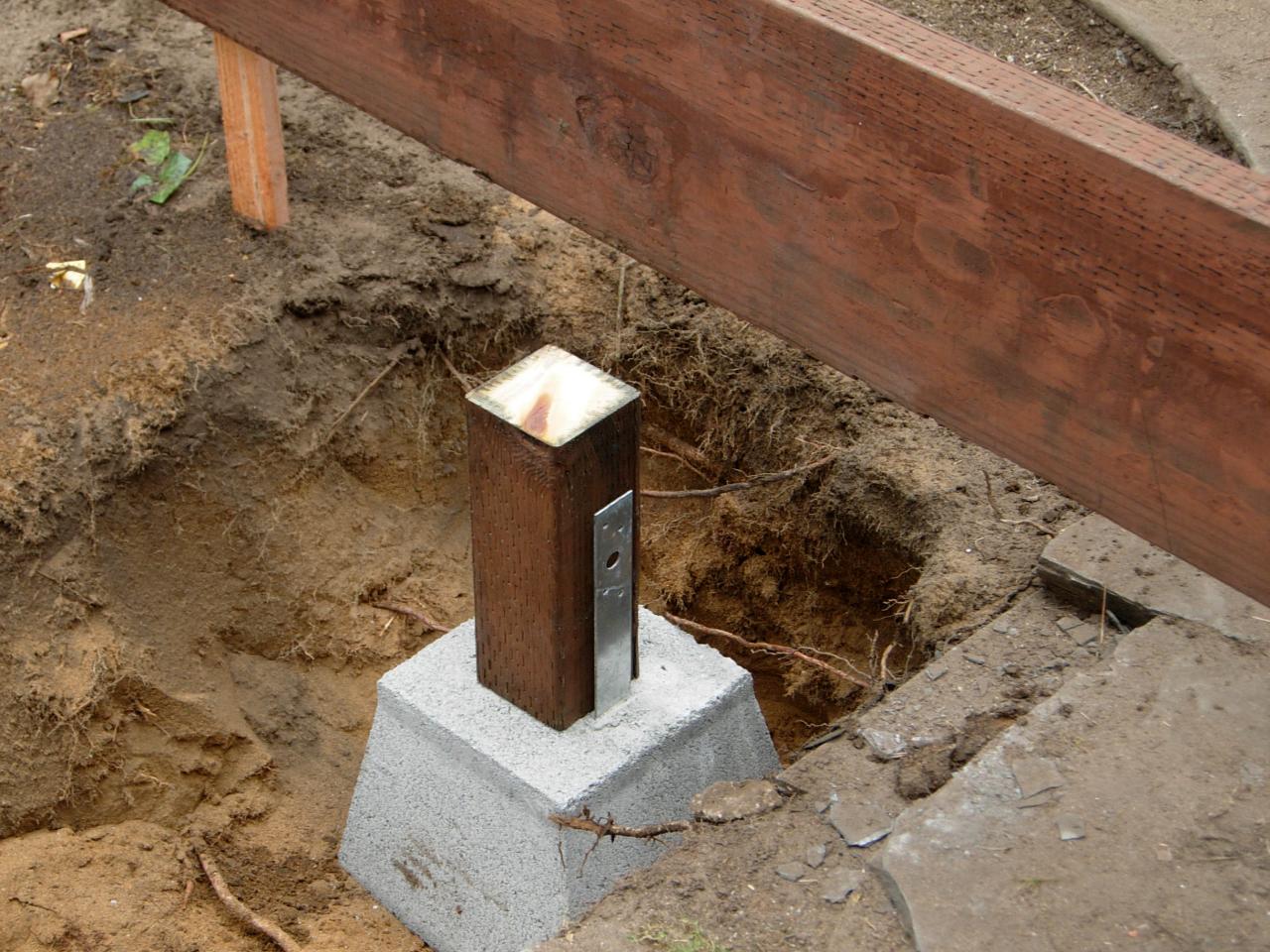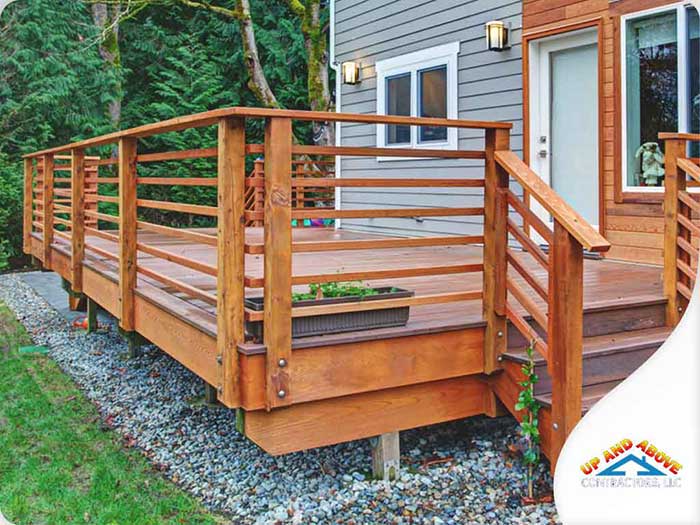Choosing the Right Deck Footings for Security and Longevity
The durability and security of your deck depend heavily on the kind of footings you choose, as they offer the important support and stability to hold up against the test of time. In this conversation, we will check out the numerous kinds of deck footings, think about the important aspects to consider when making a decision, and delve into the pros and disadvantages of different alternatives.
Sorts Of Deck Footings
These grounds are composed of a round opening filled with concrete, which supplies a solid structure for the deck messages. Concrete pier footings are fairly easy to set up and provide exceptional stability, making them a popular choice for numerous deck jobs.
These footings are mounted by screwing them into the ground, which creates a protected structure for the deck. They also permit for easy change and leveling of the deck if needed.
Alternatively, some building contractors select precast concrete grounds. These grounds are made of durable concrete and can be found in different shapes and dimensions to fit various deck styles. Precast concrete grounds are practical to install and give a steady base for the deck framework.
Lastly, another choice is the post-in-anchor ground system. This sort of footing includes driving a metal anchor right into the ground and attaching it to the deck article. It uses flexibility in regards to positioning the deck articles and appropriates for decks with lightweight structures.
When picking the best kind of deck footing, it is important to take into consideration elements such as dirt problems, deck load, and regional building ordinance (Deck Footings). Consulting with a specialist contractor or structural designer can aid guarantee the ideal footing is selected for a stable and risk-free deck
Factors to Think About When Picking Footings
When selecting the proper grounds for a deck, it is important to thoroughly take into consideration various elements such as soil problems, deck lots, and adherence to local building ordinance. These aspects play a substantial role in guaranteeing the security and sturdiness of the deck framework.
Among the primary factors to consider is the soil problems. The sort of dirt on which the deck will certainly be constructed establishes the kind of grounds required. Decks developed on loose or sandy dirts might call for much deeper footings to offer sufficient assistance and prevent settling. On the various other hand, decks improved clay or large soils may need grounds that can suit the dirt's tendency to expand and contract.
One more important factor is the deck lots. The weight of the deck, consisting of the materials used and any kind of possible online loads such as furniture or celebrations, need to be taken into consideration when picking grounds. The footings should be designed to birth the weight of the deck and distribute it equally to stop any kind of architectural problems or failings.
Finally, adherence to local building regulations is vital. Structure codes differ from region to region, and it is essential to abide by the certain demands established by the regional authorities. Deck Footings. These codes make certain that the deck is developed securely and fulfills the needed standards for structural honesty and load-bearing capability
Concrete Grounds: Cons and pros

Concrete footings use a number of benefits and downsides when made use of as the foundation for a basics deck. On the favorable side, concrete see post grounds offer superb security and toughness.
Another benefit of concrete grounds is their adaptability. They can be put right into various sizes and shapes to suit different deck styles and setups. Concrete footings can be personalized to fit the particular needs and requirements of the deck structure.
Nonetheless, there are also some downsides to utilizing concrete footings. This can raise the general cost of the deck task and may require specialist support.

Helical Piers Vs. Sonotubes: Which Is Better?
In thinking about the structure choices for a deck, the contrast in between helical piers and sonotubes is crucial in determining the superior selection. They are turned into the ground utilizing hydraulic machinery, offering a stable and sturdy foundation for the deck.
The helical plates on the piers develop a strong grasp with the soil, shifting or stopping any activity of the deck. Sonotubes, on the other hand, count solely on the concrete filling for security, which may not use the same degree of toughness and resistance.
In terms of installment, helical piers are fairly simpler and faster to set up compared to sonotubes. The hydraulic equipment used to twist the visit the site piers into the ground makes certain a quick and effective procedure. Sonotubes, on the other hand, call for digging openings and pouring concrete, which can be taxing and labor-intensive.
Furthermore, helical piers are an even more flexible option. They can be utilized in numerous dirt conditions and can be changed or enhanced if needed. Sonotubes, on the other hand, may require extra assistance, such as rebar, in particular soil conditions or areas with high tons needs.
Selecting the Right Footings for Your Deck's Dimensions
For optimum architectural integrity, it is necessary to very carefully select the suitable grounds that straighten with the measurements of your deck. The measurements of your deck, including its elevation, width, and size, play a substantial duty in establishing the kind and dimension of grounds called for.
When picking grounds for your deck, it is very important to think about the load-bearing capability of the soil. The weight of the deck, integrated with the weight of any type of furniture or people on it, exerts a significant pressure on the grounds (Deck Footings). Consequently, it is critical to pick grounds that can adequately sustain this weight without sinking or changing gradually.
The size and form of the grounds must likewise be considered. Bigger decks with higher dimensions require bigger grounds to give adequate security and assistance. The shape of the footings, whether they are rounded or square, depends on the layout and design of the deck. In addition, the deepness at which the footings are mounted must be determined based upon the frost line in your area to protect against any type of heaving or shifting as a result of freezing temperatures.
Verdict
In final thought, choosing the best deck grounds is critical for making sure stability and resilience. Variables such as the kind of footings, the deck's measurements, and the advantages and disadvantages of various choices need to be thought about. Concrete grounds provide stamina and longevity, however might be more lengthy and pricey to install. Helical piers and sonotubes have their very own benefits and disadvantages. Eventually, selecting the proper grounds for your deck's particular demands is essential for a effective and resilient structure.
These grounds are composed of a round opening loaded with concrete, which gives a solid foundation for the deck messages. Concrete pier footings are fairly simple to set up and offer superb security, making them a preferred selection for many deck projects.
Precast concrete footings are practical to set up and supply a secure base for the deck framework.
It uses versatility in terms of positioning the deck posts and is suitable for decks with lightweight frameworks.
Concrete grounds supply numerous benefits and downsides when used as the foundation for a deck.